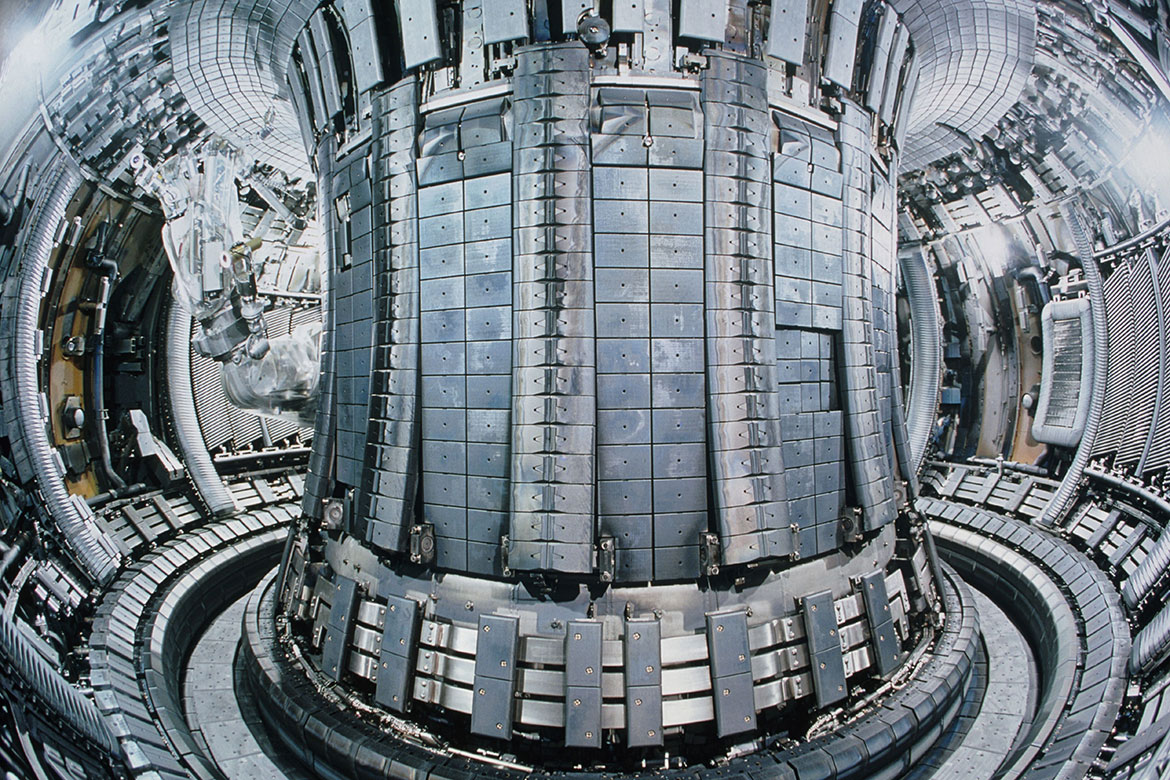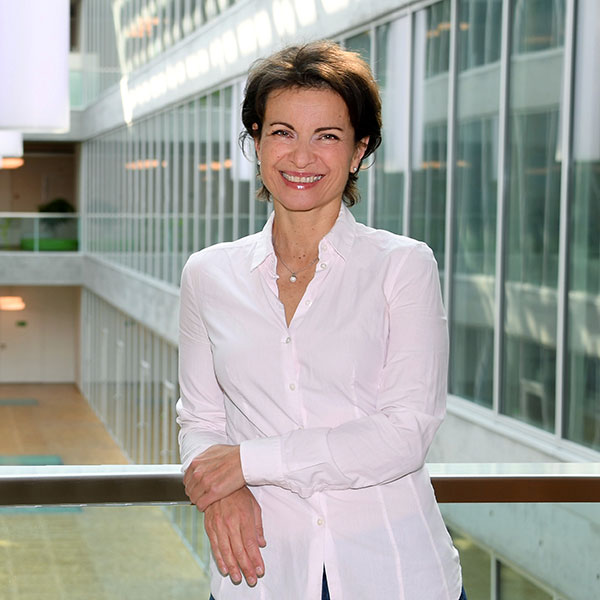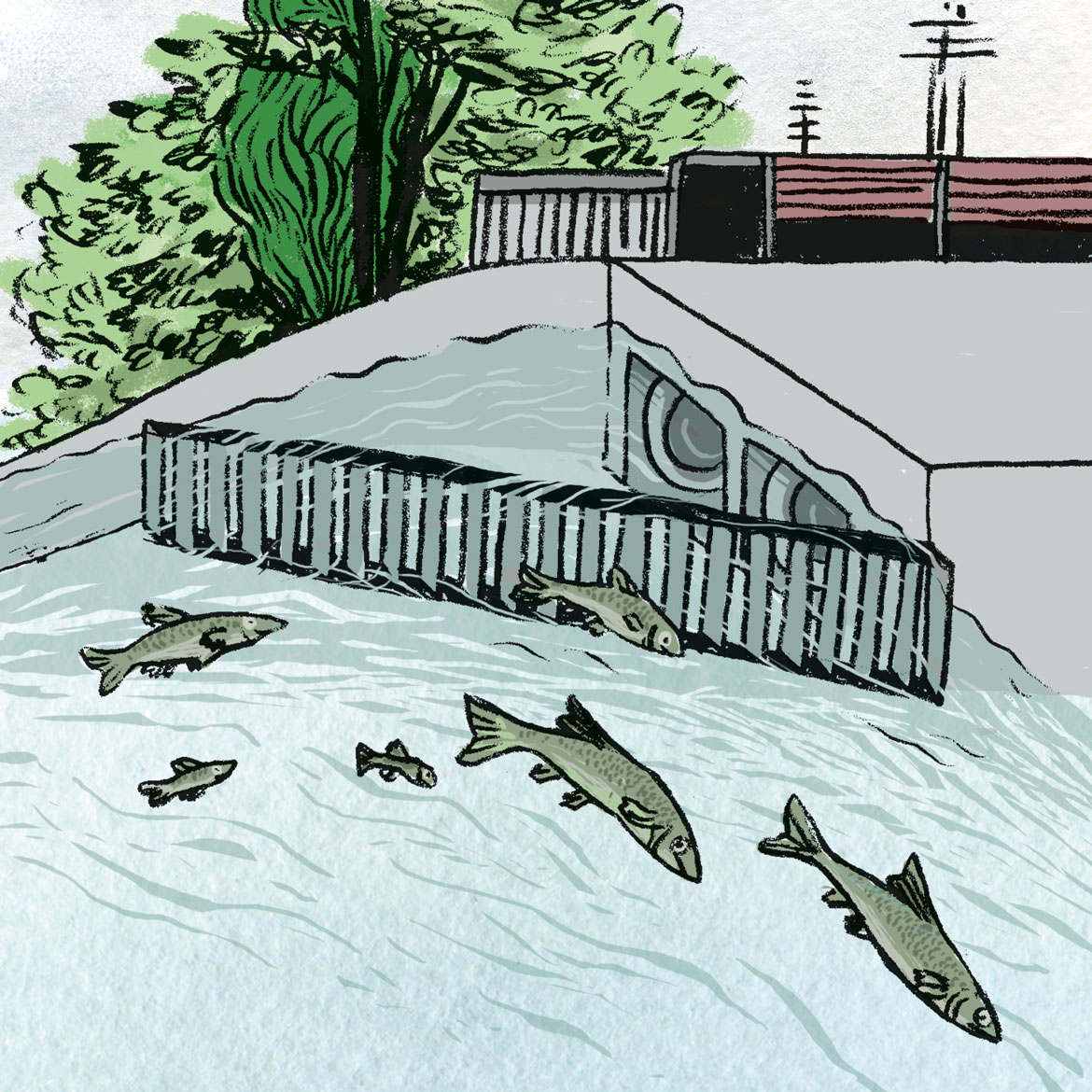Feature: Getting creative against climate change
Projects for a better climate
Should we try and stop global warming or just adapt to it? Neither will be possible without technological innovation. Our climate journalist introduces ten Swiss research projects and start-ups.
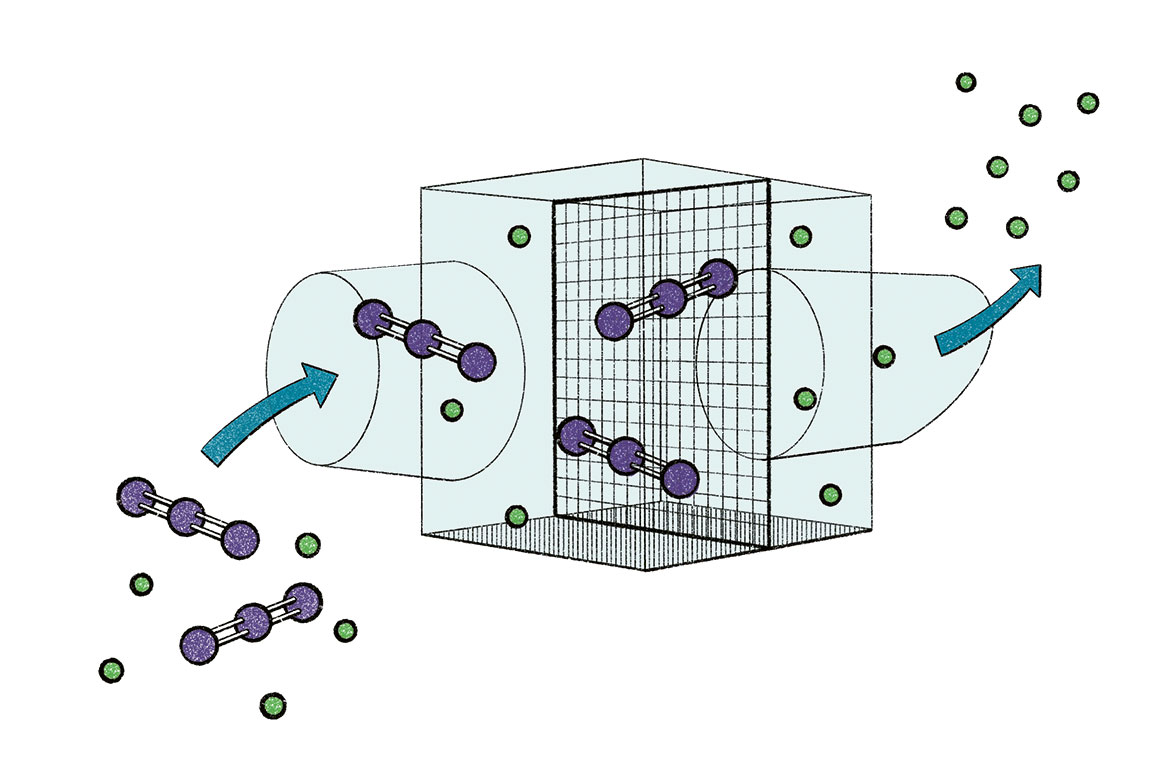
A filter with a granulate of amines binds the CO2
Filtering CO2 from the air
The Swiss flagship start-up in the climate protection sector is Climeworks, whose CO2 filters have made the headlines. It is already running 14 plants, the biggest of which is in Hinwil in the canton of Zurich. At the heart of Climeworks’s technology is a filter that contains a granulate with amines such as are commonly found in industry. These bind the CO2 with humidity from the air. When heated to 100 degrees Celsius, the filter sets the gas free again. The highly concentrated CO2 is then bought by operators of greenhouses and the manufacturers of carbonated beverages. In a pilot plant on Iceland, however, the gas is being stored underground in order to achieve negative emissions. In 2019, Climeworks also entered into collaborations with the companies Svante (Canada) and Antecy (the Netherlands) to pursue alternative methods of extracting CO2 from the air. Climeworks is an early starter, and seems well on its way to playing a major role in this market.
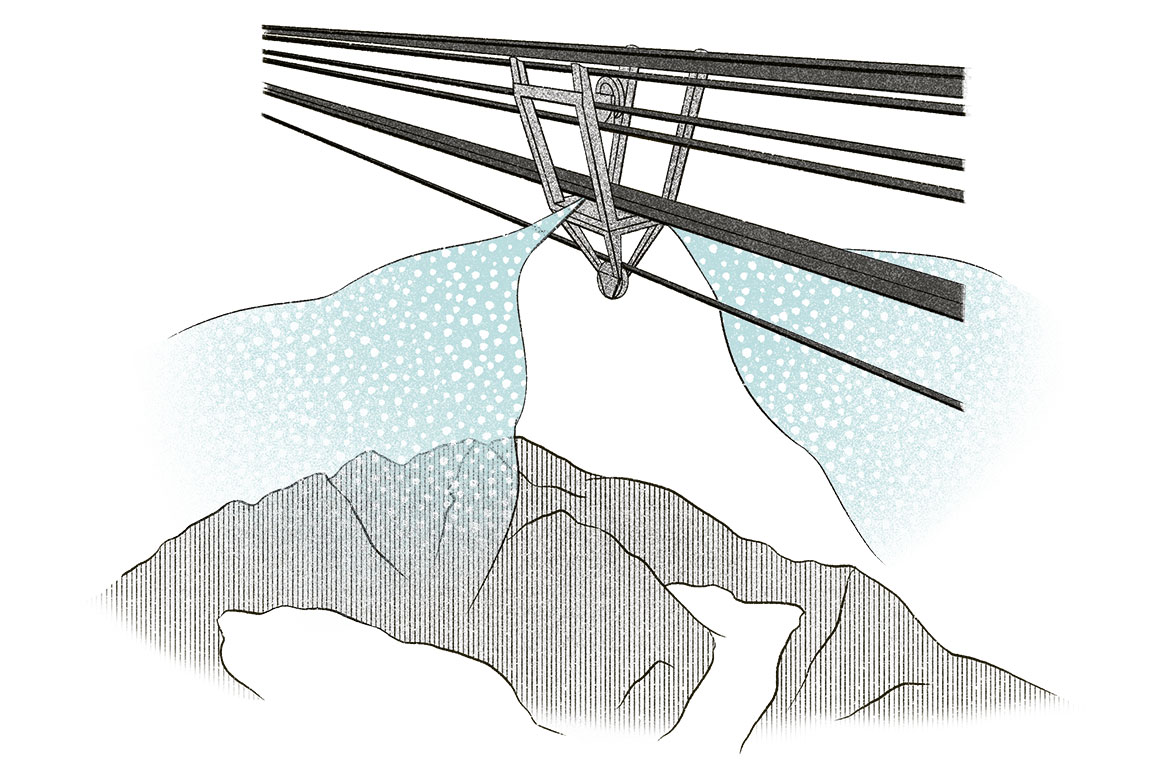
A snow machine should slow down the melting of glaciers.
Preparing a glacier for the summer
The glaciers in Switzerland are shrinking rapidly – but is this inevitable? Felix Keller believes that this might be averted by covering them with artificial snow. Keller is a scientist at the Academia Engiadina, and he had this idea while out fishing. “It’s simple: we keep the meltwater up on the mountain and produce snow from it in the winter, without any need for electrical power; in the summer, the snow then provides a protective cover for the glacier”. Free hanging water pipes would spray the glacier with snow when the temperature is below zero. In the summer, the snow would reflect a lot of sunlight, so the glacier would melt less. If the water were taken from a higher-lying meltwater lake, you wouldn’t even need a pump. The project “MortAlive” is intended to save the Morteratsch Glacier in this way. It’s a crazy idea. But Keller has been able to win over other researchers and two industrial partners for a trial run on Piz Corvatsch.
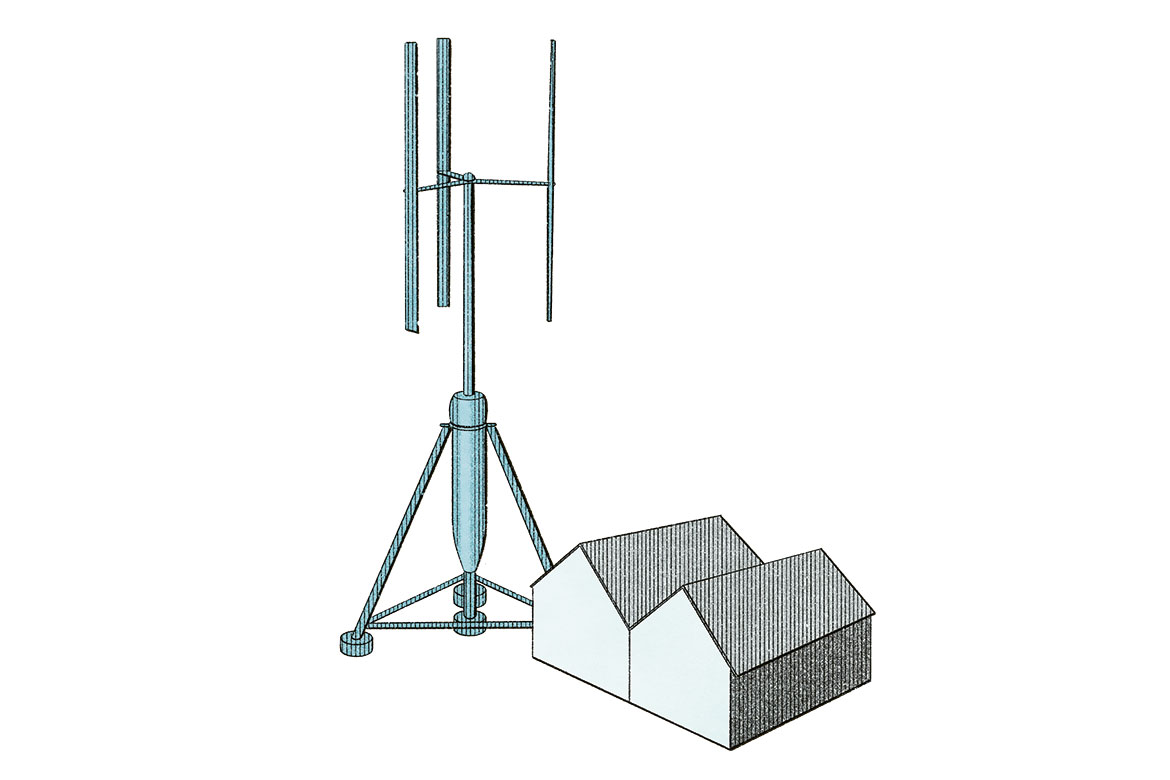
Vertical axes are at an advantage near urban areas.
Quieter wind turbines
Instead of being placed horizontally, the wind turbines in development by ‘Agile Wind Power’ have a vertical rotor axis. They have several advantages, according to the company: they make much less noise and are less of a danger to birds and bats. Where decentralised electricity generation is required, such as near urban areas, these vertical turbines could corner a niche market. Building work began in 2019 on a demonstration plant near Düsseldorf, where their model turbine ‘Vertical Sky A32’ stands 105 metres tall. In order to keep mechanical stress low and efficiency high, the rotor blades are constantly regulated. Turbines with an output of 750 kilowatts are now ready for series production. They will be manufactured in Bremen in future.
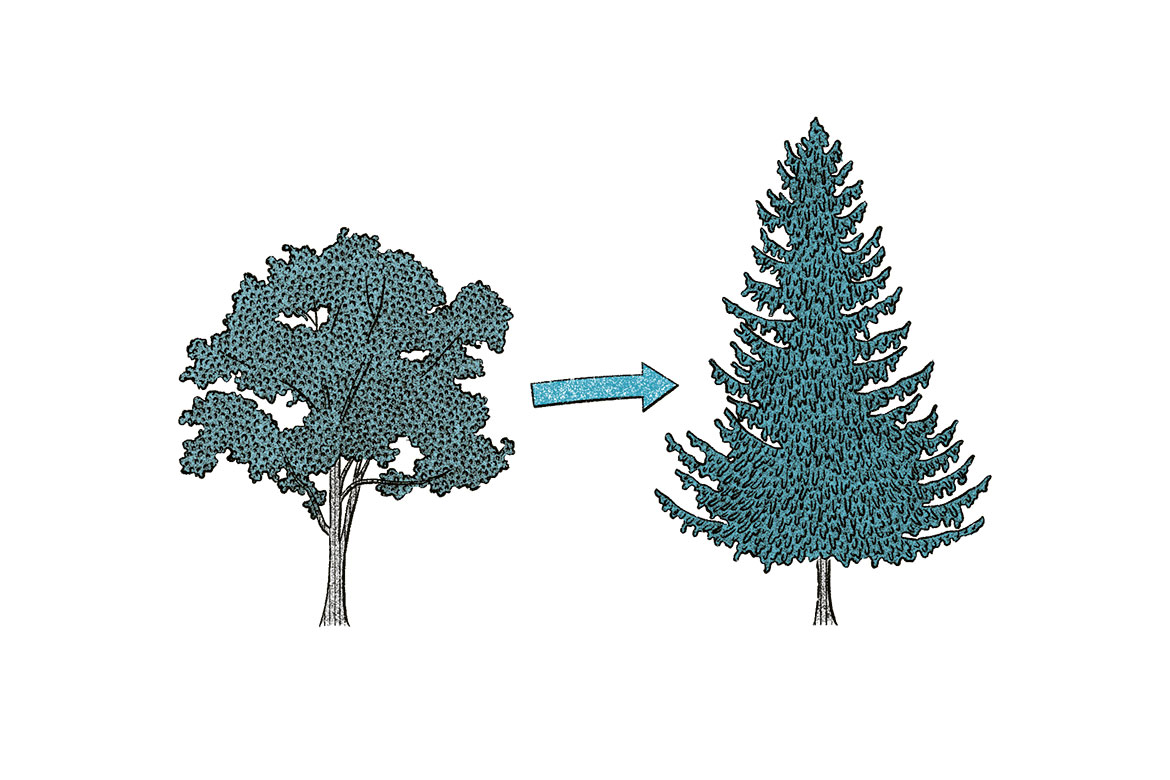
Maple trees are being replaced by heat-tolerant douglas firs.
New trees for the Forest
The road to the southern entrance of the Lötschberg Tunnel winds its way upwards between Brig and Hohtenn in the canton of Valais. A partially irrigated forest of ash, maple, birch and robinias protects it. “The trees protect the railway lines from avalanches, rockfalls and erosion”, explains the geologist Nicole Viguier from the railway company BLS. But as our climate warms up, there is an increasing danger that the tree population will suffer under the higher temperatures. In order for this protective forest to continue fulfilling its function, employees of BLS, the Swiss Federal Office for the Environment, the research institute WSL and the canton of Valais are now looking for suitable tree species. One question, for example, is whether or not they will be permitted to plant non-indigenous species such as the heat-tolerant Douglas fir. After an initial literature study, the team involved is now mapping the trees as they are. Then they will develop a concept for a test and observation area. Just which trees will be the most suitable will become clear in the course of field studies in a subsequent project.
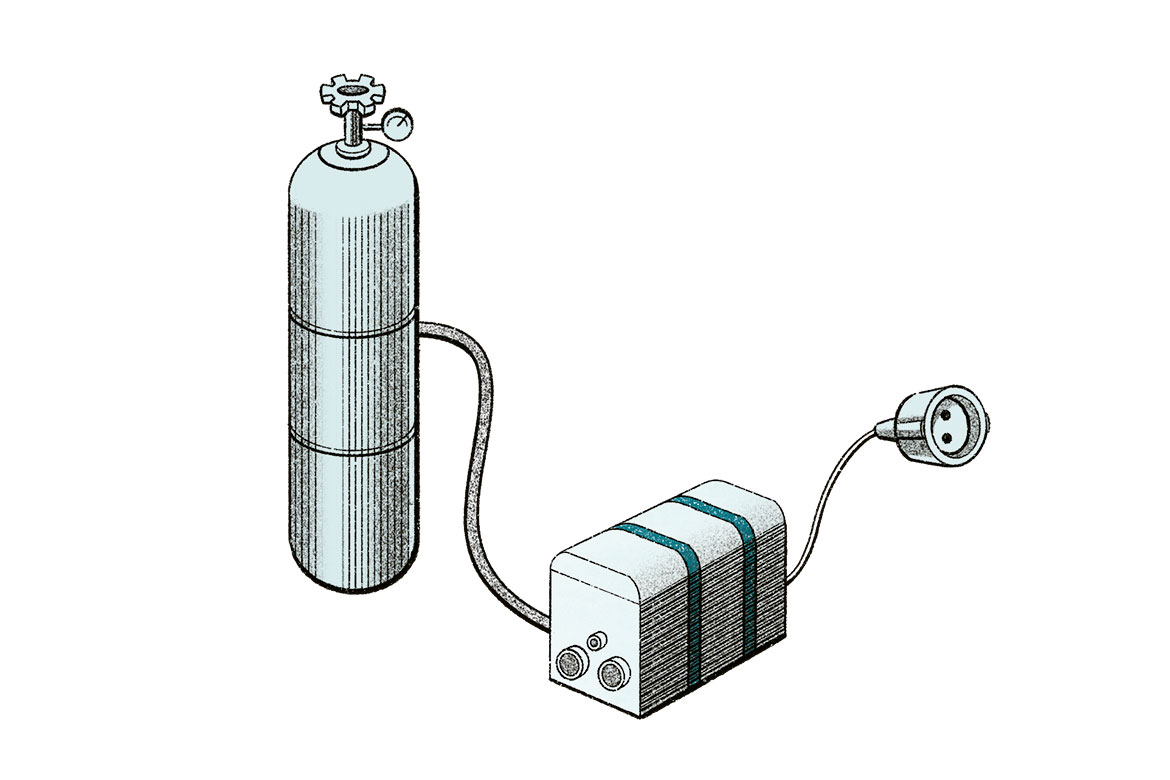
Small, light, portable electric generators.
A light hydrogen battery
Fuel cells generate electricity by letting a fuel and an oxidising agent react together. The start-up EH Group Engineering, based near Lausanne, is developing especially compact cells using hydrogen. If the gas is produced with electricity from renewable energy sources, then using fuel cells is very climate-friendly. The cells of the EH Group are stacked unusually closely, but are very light and efficient. According to Christopher Brandon, who works for the company, these cells are highly suited for use in vehicles – whether cars, busses or boats. In the next 12 months, they say production should be able to reach their desired output.
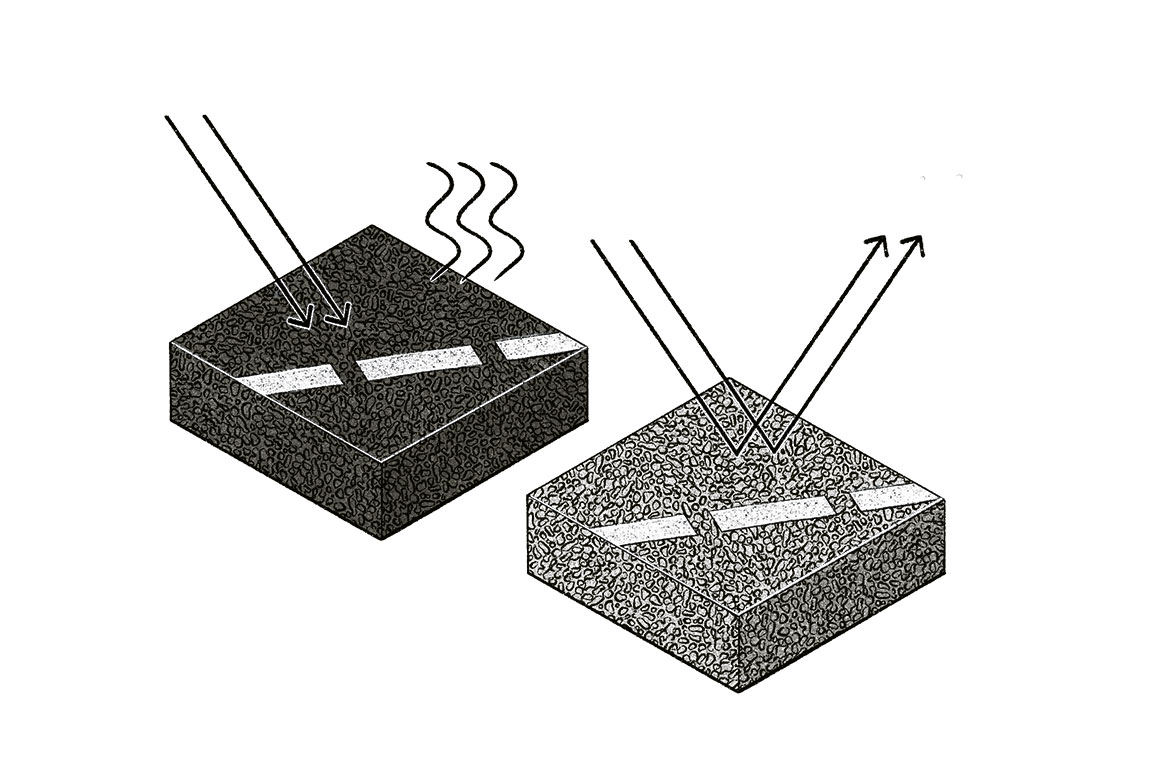
Lighter-coloured materials reflect more sunlight.
Cool road surfaces for hot days
In summertime, towns warm up more than the surrounding area. Especially at night, this can mean a difference of several degrees. This increases the danger that critical health thresholds might be crossed. One major cause of this overheating is dark road surfaces that absorb a lot of sunlight. This coming summer, new road surfaces are going to be tested in Bern that should heat up less. “We are trying out admixtures of light stone and colourings in the road surface”, says Vincent Roth of the engineering company Grolimund and Partners. Temperature probes in the road surface and infrared photos will be used to determine by how much the surface temperature can be reduced. Grolimund is working together with the construction company Hans Weibel AG and the Bern Civil Construction Authority, and model calculations are being provided by ETH Zurich. The project isn’t expected to work miracles. But climate-friendly road surfaces could help to alleviate the warming of our towns and cities.
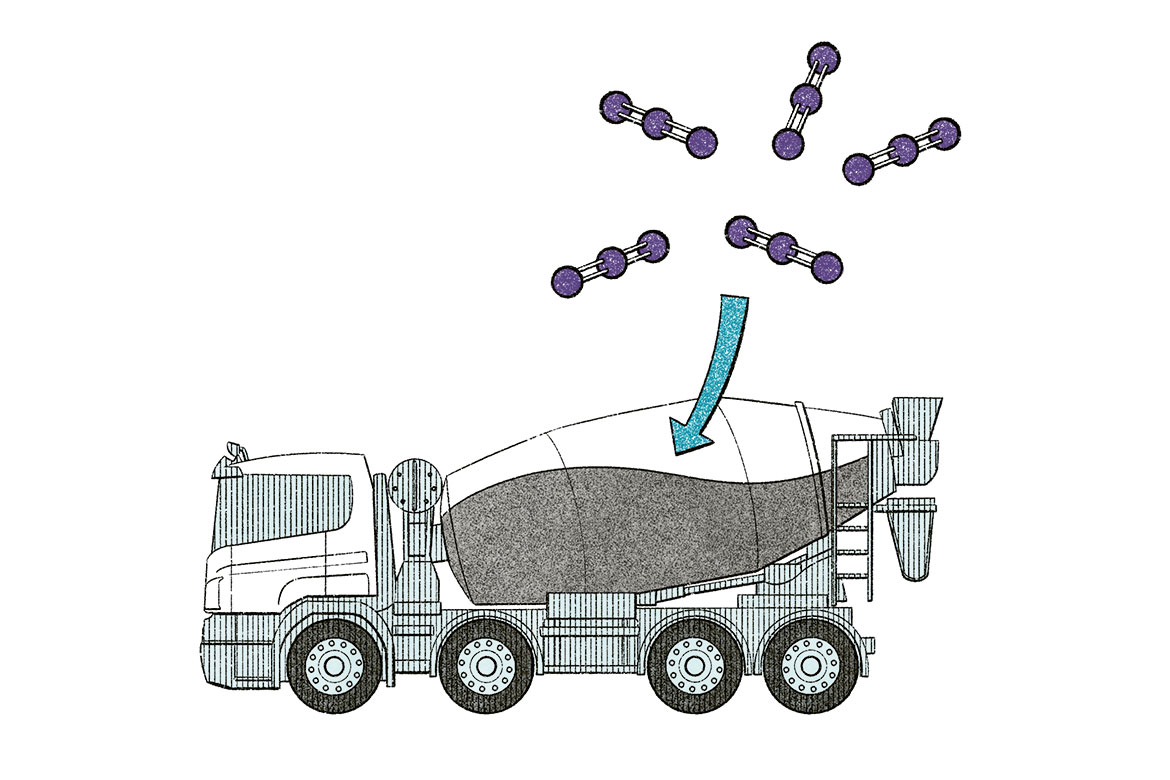
Treating rubble with CO2 creates lime.
Making concrete from rubble
Construction work and climate protection are uneasy bedfellows, because manufacturing cement releases a lot of CO2. But there are other solutions. The spin-off Neustark is improving the recycling potential of concrete. Normally, when a building is demolished, its materials are incorporated in a new concrete mixture. Neustark first treats the rubble with CO2, which creates lime that closes the pores of the material, making it better suited to producing new concrete. This in turn reduces the amount of cement needed. If the CO2 used is produced from biomass, then it can even be taken out of the air. Currently, a commercial pilot plant is being built in Bern. The spin-off Oxara, by contrast, transforms uncontaminated rubble from building pits into cement-free concrete: mineral additives have made it easier to mould the excavation materials and accelerate their hardening process. The end product is suited for non-load-bearing construction parts, and the technology continues to be developed for the market.
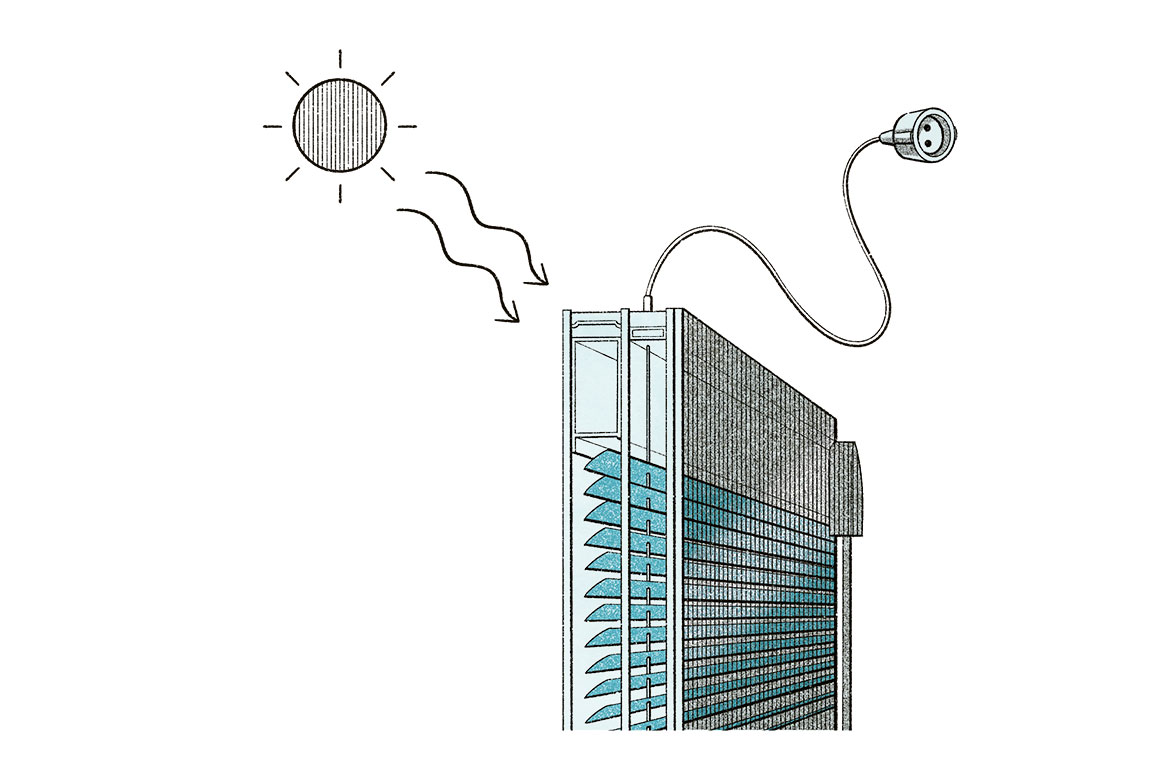
Solar cells in windows have a dual function.
Flexible windows and façades
Roofs and façades are fundamental construction elements that prevent buildings from heating up in our age of climate change. The young spin-off company ‘innovative Windows’ is developing windows that protect interiors from sunlight and produce electricity at the same time. They insert blinds containing solar cells between two window panes, and, because the blinds are enclosed by glass, they are protected from environmental influences. It remains uncertain whether or not these solar blinds will have a chance on the market, because there are many other approaches to the problem. A group at ETH Zurich, for example, has developed solar panels for façades that move automatically to face the sun. And there are low-tech solutions too. Green roofs prevent buildings from heating up, they collect rain, and increase air humidity.
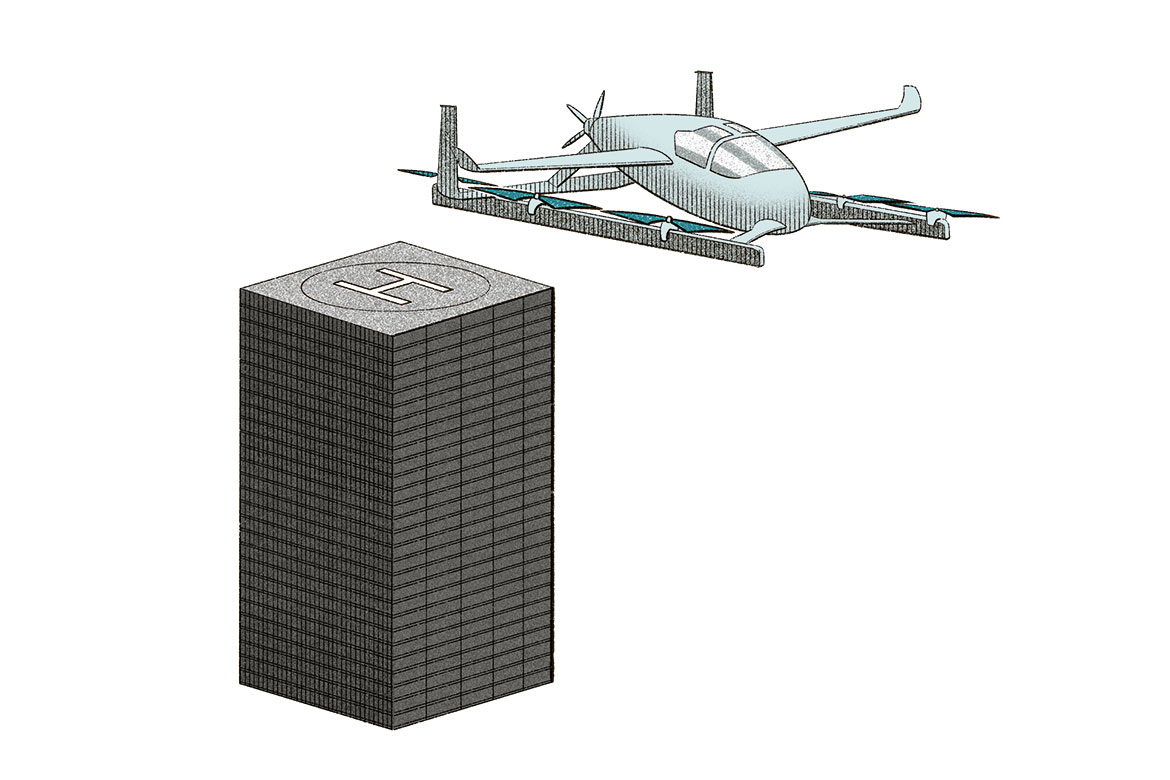
Vertical take-off for city travel.
Swiss flying taxis
Today, we have grown used to the buzzing of drones everywhere. Will electric taxis be next? The Boeing subsidiary Aurora Swiss Aerospace is working on just such a concept. Flying taxis could help to protect the climate if the energy needed for their construction – and the electricity for their motors – can be procured from sources with a low carbon footprint. Eight rotors mean this ‘Passenger Air Vehicle’ can take off and land vertically. Its maiden flight took place in January 2019. For horizontal travel, the vehicle has wings and a further propulsion rotor. But getting right the transition from the vertical start to horizontal flight is still proving a headache for the developers. This flying taxi is intended to carry two to four passengers for up to 80 kilometres. But issues of safety and noise control still have to be solved. It could still take years before the vehicle becomes viable in practice.
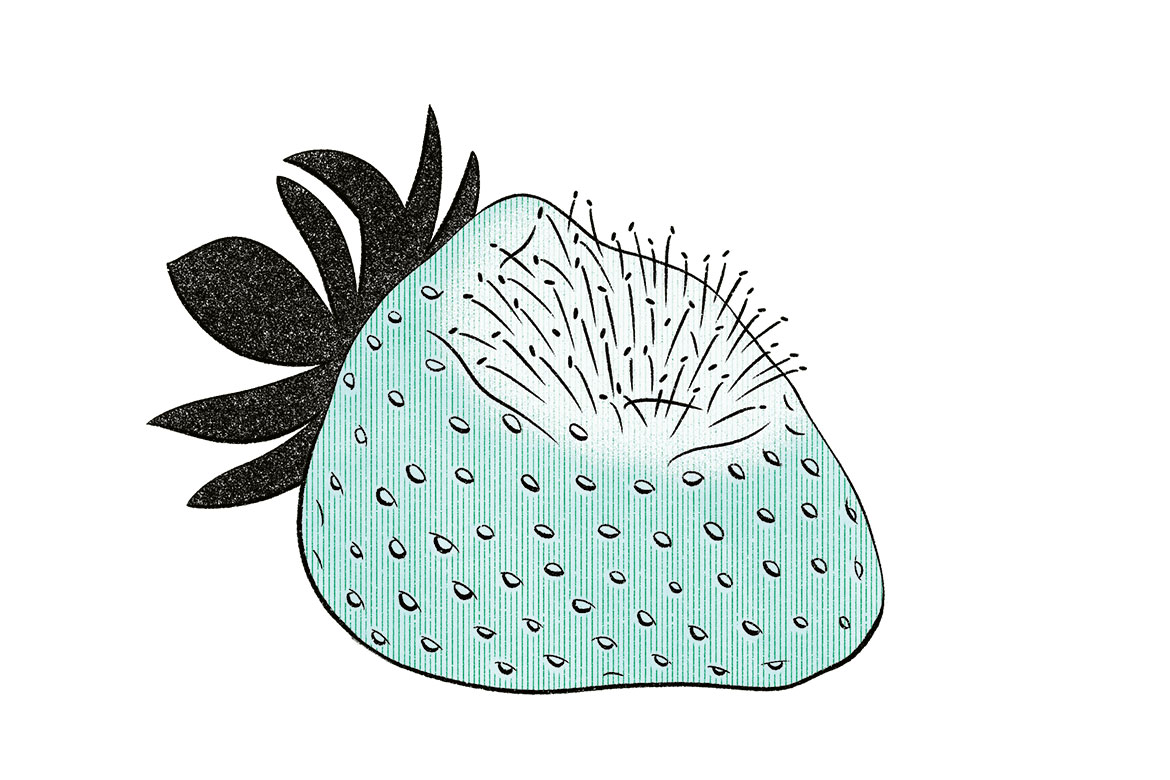
Natural fungicides help with food storage.
Less mould, less food waste
Producing foodstuffs releases greenhouse gases. When fruit and vegetables go mouldy and have to be thrown away, those emissions have been for nothing. So combatting mould with fungicides can help to protect the climate. But many synthetic fungicides are problematical: “Depending on their concentration, they can actually damage biodiversity and be injurious to our health”, says Olga Dubey, the founder of the start-up company Agrosustain. She’s trying to find natural fungicides instead. The plant Arabidopsis thaliana (thale cress) provided Agrosustain with its first possible solution. In total, five natural fungicides are at present being developed. According to Dubey, they leave no residue when they decay. She is collaborating with the research institute Agroscope and the retail company Migros in order to develop marketable products. She has already found investors.
Illustrations: Lui Chi Wong

